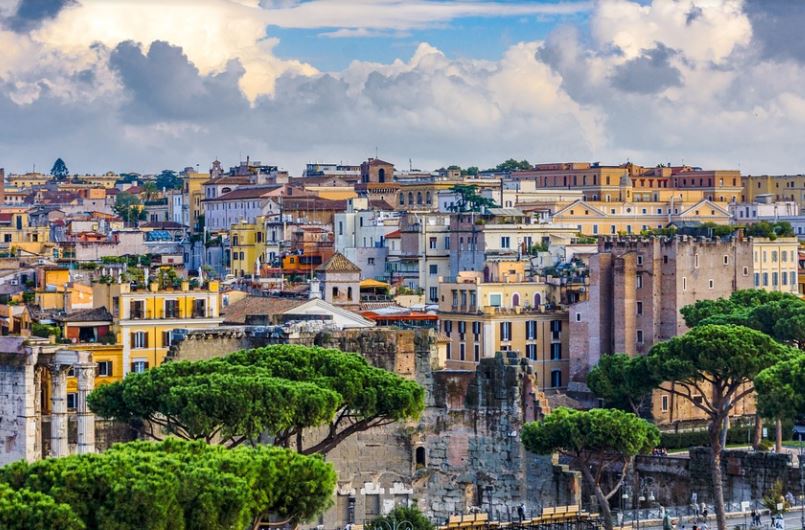5 things you must do when teaching in Rome
If you’re planning on teaching English in Rome this year then you’re in for one seriously enthralling ride through ancient history, Renaissance art, medieval building work, and food so tasty you won’t be able to put the pasta fork down. This guide outlines five things that we think every newbie TEFL pro in the Eternal City should have on their to-do list…
Get lost in the Centro Storico

The Centro Storico is the part of Rome that all the tourists want to see. The good news is that if you’re teaching in the city, then you have plenty of time to check off the sights within when the summertime crowds aren’t around. And there certainly are plenty of sights…
From the dome-topped Pantheon to the romantic Spanish Steps, the babbling Trevi Fountain to the monument-flanked Piazza Navona, this is the part of the city where gasps come around virtually every corner. Oh, and it’s a shopping mecca, so you might want to set aside some of those teaching earnings to go towards a designer bag or ten.
Picnic in the parks

If you’re teaching in Rome, then you’ll want to do as the Romans do. That means park picnics have to be on the itinerary when the warmer weather comes around. Locals are always bagging take-away pizzas or tasty selections of olives, cheese, and bread and heading to the city’s green spaces. It’s easy to see why, since they are lovely green spaces.
Our favorite is probably the Villa Borghese, a cut-out of pine woods and scrub meadows that meets the slender cypress gardens of an ancestral home just down the road from the Vatican. The Villa Doria Pamphili on the southwestern side of town is also a stunner, with rolling fields and manicured maze gardens to enjoy.
See the ancient side of the city

Rome has a very long history. Legend has it that the town was founded way back in 753 BC by the warring brothers Romulus and Remus (no prizes for guessing who won!). The golden age of Rome came with the Roman Republic and then the Roman Empire, which was led by figures we’ve all encountered in school – Augustus, Nero, Caligula.
Remnants of that epoch are still very much intact. The most iconic of them is the Colosseum, a 2,000-year-old gladiator fighting arena. But there’s also the sprawling Roman Forum, which hosts important political buildings and palaces used by the imperial family. These are, to put it frankly, not to be missed!
Eat pasta

We think the chances are you were planning on this one anyhow, right? Well, just in case, we’d like to remind food-loving TEFL travelers to the Eternal City that this is one of the global capitals of pasta. There’s pasta for lunch, pasta for dinner, pastas suited to spring, summer, and winter, even pasta bakes and soups. You can’t avoid it in Rome, but we can’t think of reason that you’d want to.
There are a couple of dishes that are trademark Roman stuff. Be sure to sample:
- Pasta alla gricia – Pork cheek bits are used as the base to create a fatty, cheesy pasta.
- Cacio e pepe – Uber-simple, this one’s just Italian hard cheese with pepper. Goes perfectly with a crisp white wine!
- Spaghetti alla carbonara – Everyone’s heard of this. Pork bits fried with oil and then topped with an egg for creamy effect.
Go museum hopping

All first-time visitors to Rome should set aside some time to check off the museums of this city. Some of the most acclaimed in the world await here; collections to rival even the Louvre and the British Museum.
Chief among them is probably the Vatican. It has sprawling collections that take days and days to get through properly, and include works by the likes of da Vinci, Michelangelo, and Caravaggio. Then there’s the Centrale Montemartini, a former power station that now has a rich array of Roman-era statues. And you’ve got the Galleria Borghese, which has limited ticket numbers each day but hosts a couple of priceless post-Renaissance masterworks.
Are you a veteran of teaching English in Rome? Have you got anything to add to this list? We’d love to hear your thoughts in the comments below. Alternatively, check out our guide to teaching English in Italy.
